Before we start: When replace hard drive with SSD on Mac El Capitan, you can use Donemax Disk Clone for Mac to clone the Mac OS to the SSD directly along with all data. It can ensure to create a bootable copy of the hard drive. You can replace and then use the new SSD as the startup dis for Mac directly.
PAGE CONTENT:
My computer always gets stuck, and I want to upgrade my Mac's hard drive to a big new SSD. How can I clone my Mac El Capitan system to the new SSD?
Replace the hard drive with a new SSD on Mac is a solutions to solve the Mac slow performance issue. To migrate everything from the old hard drive to the new SSD, it's better to cloning the hard drive directly. It can easily and quickly clone Mac El Capitan to new SSD along with all the other data, like programs and personal files.
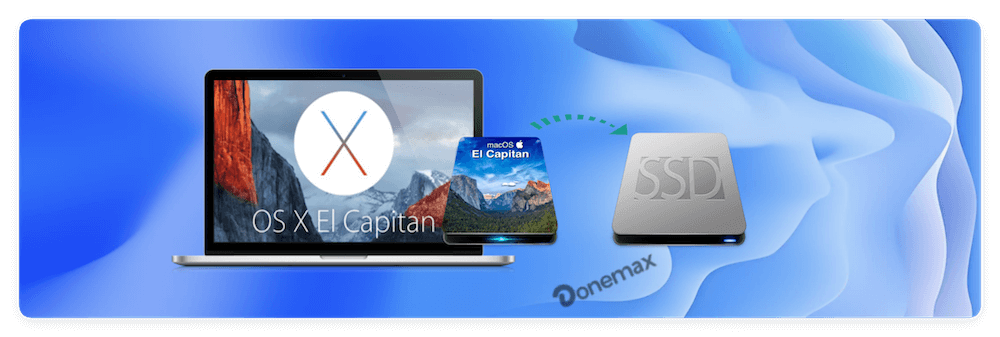
Here are two ways to solve this similar problem. We will introduce the 2 methods in detail on this page. You can then easily and safely create a bootable and full copy of Mac El Capitan.
Method 1: Clone Mac El Capitan to New SSD In Recovery Mode
When you want to clone your Mac system or hard disk to other hard disks, the tool Disk Utility that come with the system can help you achieve this purpose. Cloning the hard drive to SSD or others on Mac El Capitan is called "Restore" (restoring one hard drive to another).
To clone the Mac startup disk to SSD, it's highly suggested to do the job in Recovery mode. The following are the specific operation steps to clone hard drive to SSD with Disk Utility in Recovery mode:
Step 1: Connect the prepared external hard drive to your Mac computer. Then start the computer. Keep pressing Command + R during the startup process. This will enter the Mac recovery menu interface.
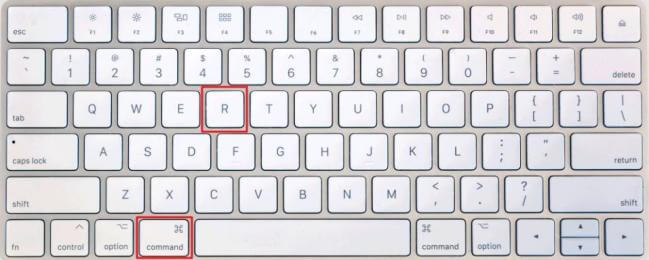
Step 2: When the Apple icon appears on the screen, release Command + R and wait for the progress bar to load.

Step 3: In the macOS utility window, select Disk Utility, and then click Continue.
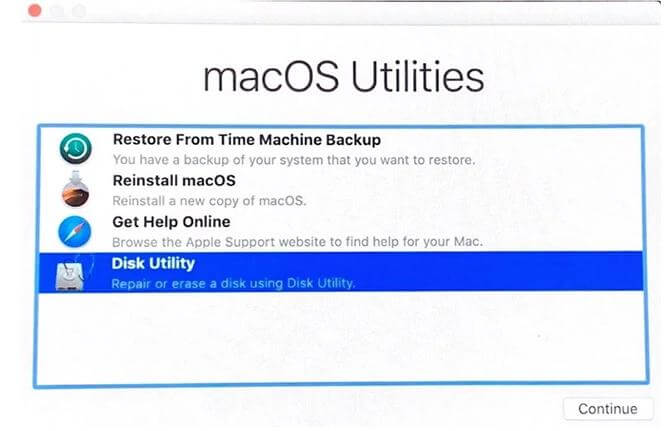
Step 4: On the Disk Utility page, select the external hard disk in the left sidebar and click the Restore button in the upper middle. Then a window will pop up, prompting that the selected external hard disk will be erased and replaced with The data of the chosen volume below cannot be undone, so please back up the data on the external disk in advance. Then select the Mac hard drive as source. If you want to migrate the data of the entire system disk to the new SSD, please select the whole disk.
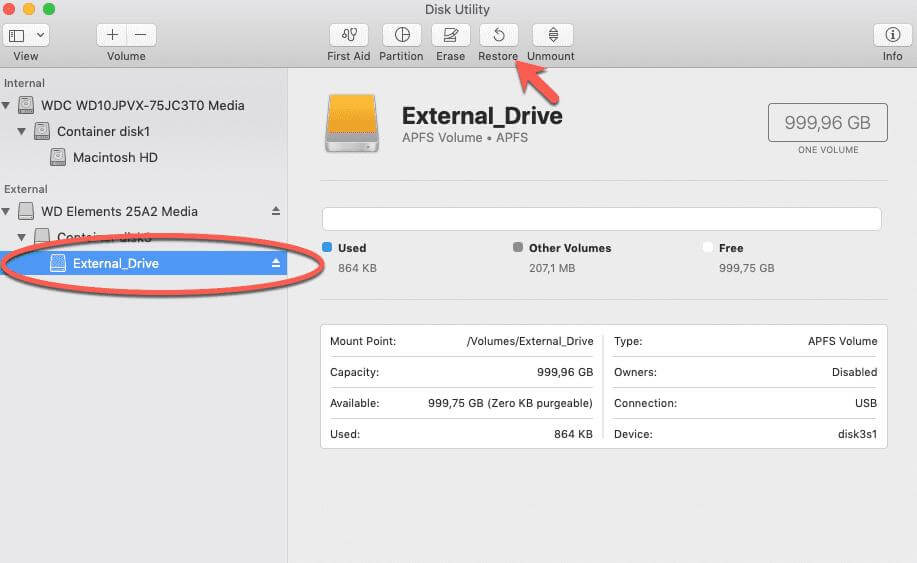
Step 5: Then click the Restore button, wait for the recovery process to complete, and finally click Finish.
💡 Note: This restore will erase the data on the target disk. Please back up your data before restoring it. Or you can use a new or empty SSD as the target.
Method 2: Clone Mac El Capitan Hard Drive to New SSD with Mac Cloning Software
Donemax Disk Clone for Mac provides the clone os mode to help you create a bootable macOS backup. With this mac disk cloning software, you can replace and upgrade your old SSD to a new one or back up your mac disk regularly to protect data and keep them safe. It will clone all data (macOS data, apps, user files, settings included) from the Mac startup disk to an external HDD or SSD.
Donemax Disk Clone for Mac
- Reliable disk cloning software for Mac.
- Create bootable clone for Mac El Capitan.
- Clone hard drive to SSD safely.
Compared with the tools that come with the system, the operation of Donemax Disk Clone for Mac is much simpler and more convenient. It can also realize the backup function and restore the backed-up data to the appropriate environment you need.
The following are the specific operation steps to clone Mac El Capitan to new SSD with the software Donemax Disk Clone for Mac:
Step 1. Select the external disk as the destination drive. First of all, connect the external disk to your Mac, then choose OS Clone. The system drive will be selected as the source drive, and you just need to select the external disk as the destination drive.
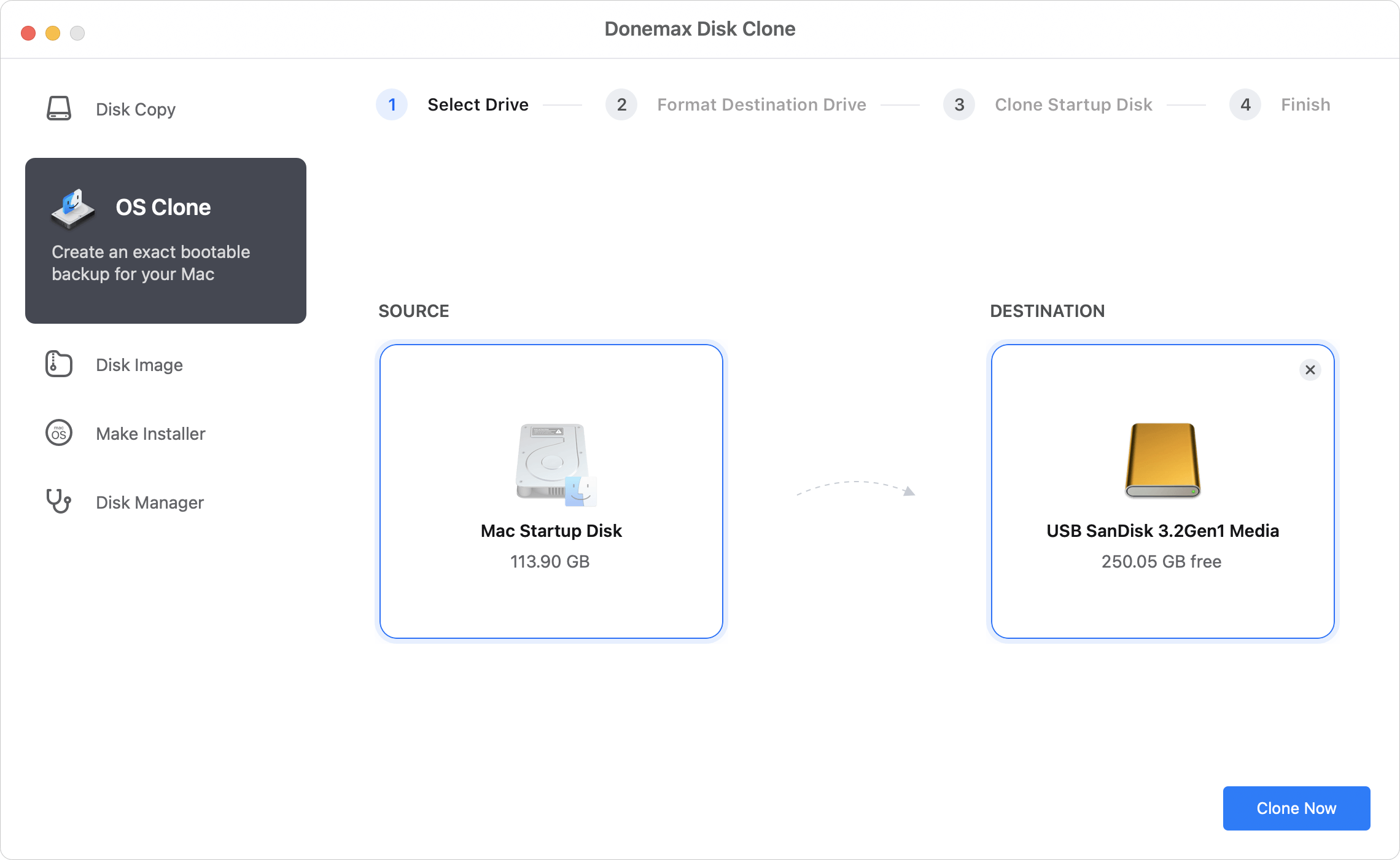
Step 2. Clone system drive to the external disk. Click on Clone Now button. This process will format the external disk first, then wholly clone the system drive to the external disk.
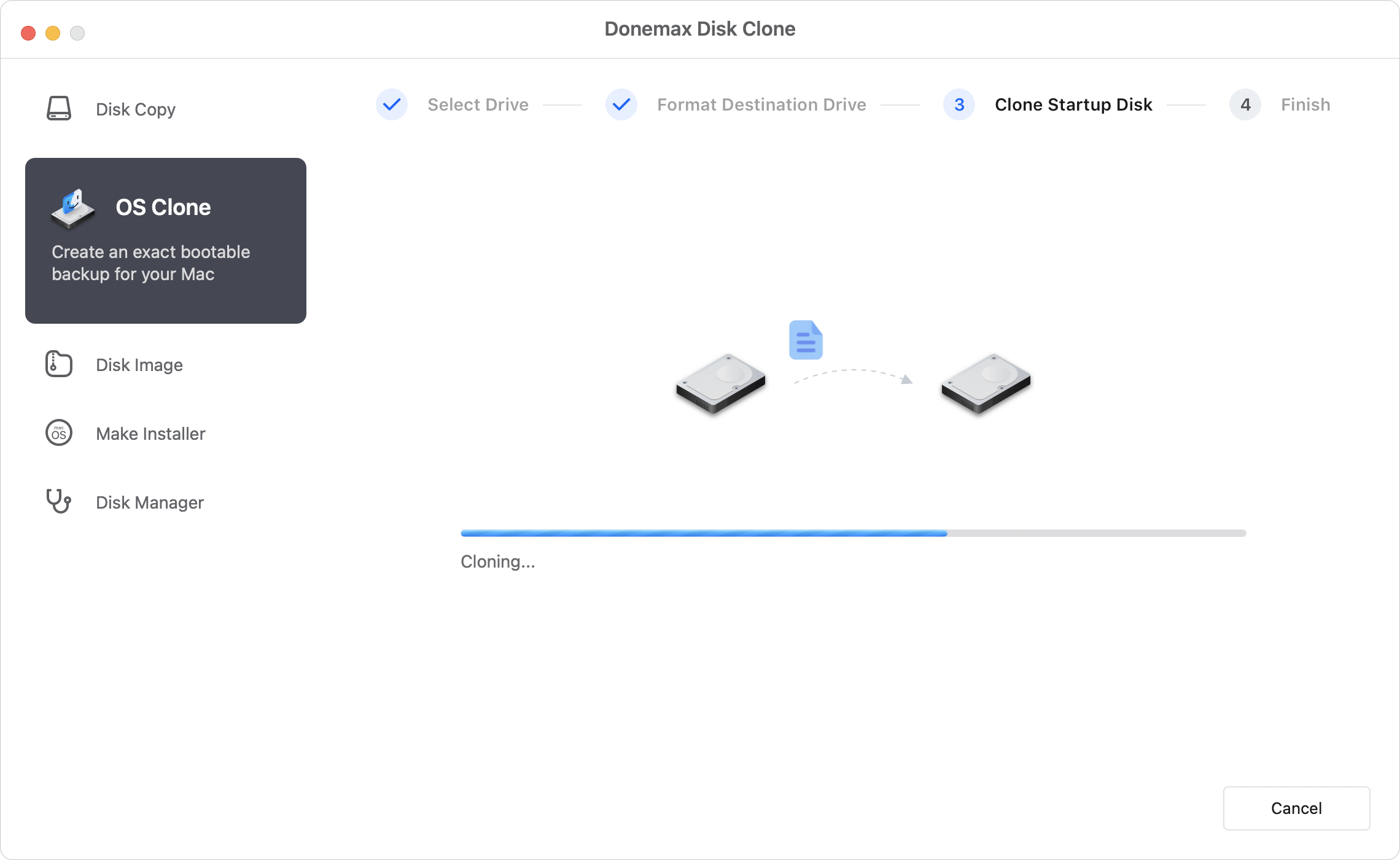
Step 3. Once the process gets finished, you've successfully created a bootable backup for your Mac. You can then access the cloned new SSD to check the data first.
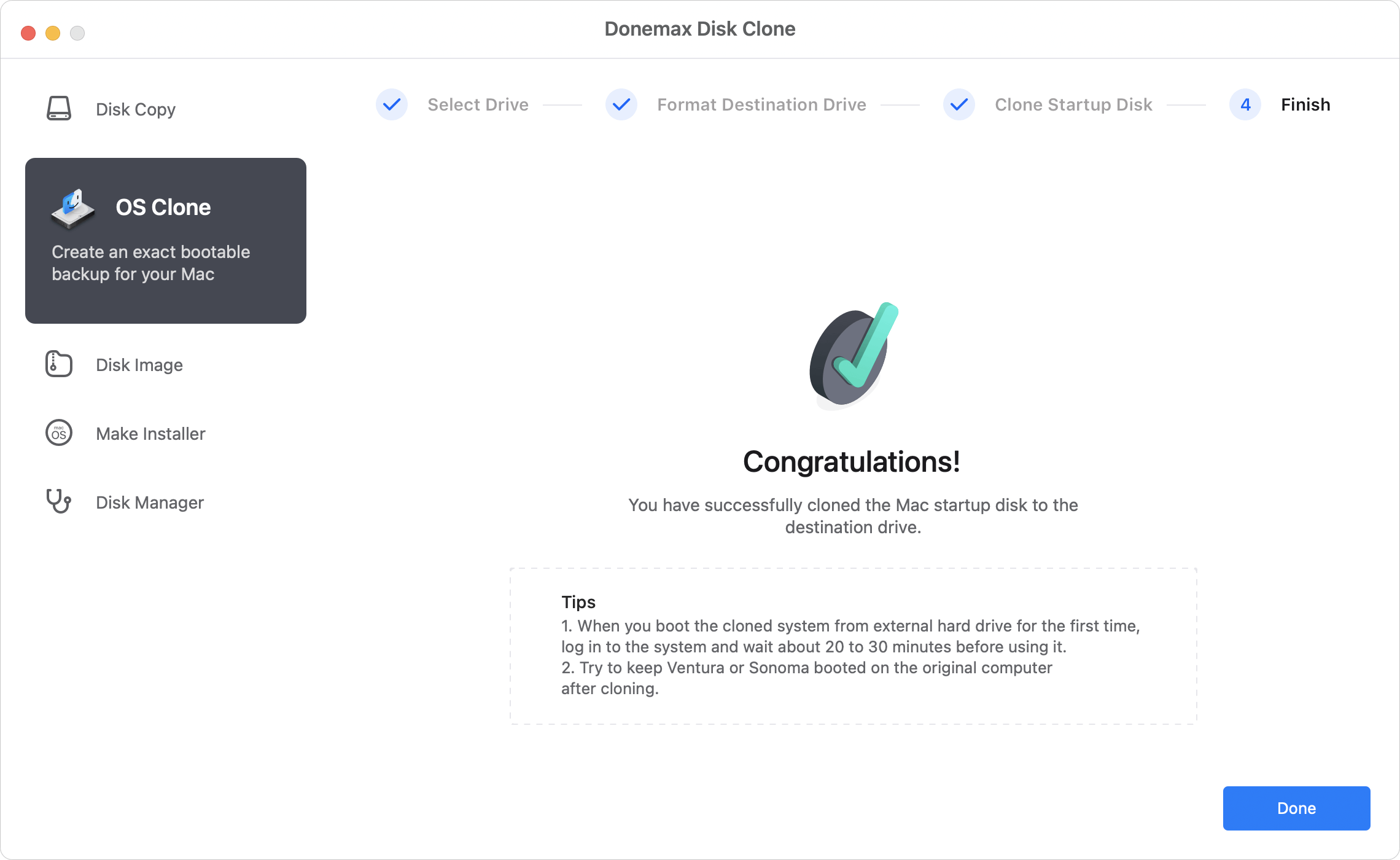
You can use the clone disk as a bootable startup disk on any compatible Mac. You also can use the backup to restore macOS or data in macOS Recovery mode.
The disk cloned by Donemax Disk Clone for Mac can also be used as a backup disk. When you need to restore the backup data, you can use the disk you cloned to handle this matter. You can copy individual files from the cloned drive, clone entire drive to another one, or just use the cloned drive as a startup disk on Mac directly.
How to boot the macOS after Mac disk clone?
After cloning Mac El Capitan to new SSD, it's essential to check and confirm whether the cloned SSD is bootable. Then you can feel free to keep it as backup or replace the original system disk with the new SSD.
Here we will show you the steps to boot Mac from an external bootable SSD:
Step 1: After the Mac system is cloned/restored to the SSD (solid state drive), please keep the external hard drive connected to the computer and restart the Mac computer.
Step 2: Press and hold the Option key during the restart process.
Step 3: The boot switch menu will then appear, where you can select the system disk you want to boot.
Step 4: Click the arrow icon below the SSD and continue to start the Mac computer.
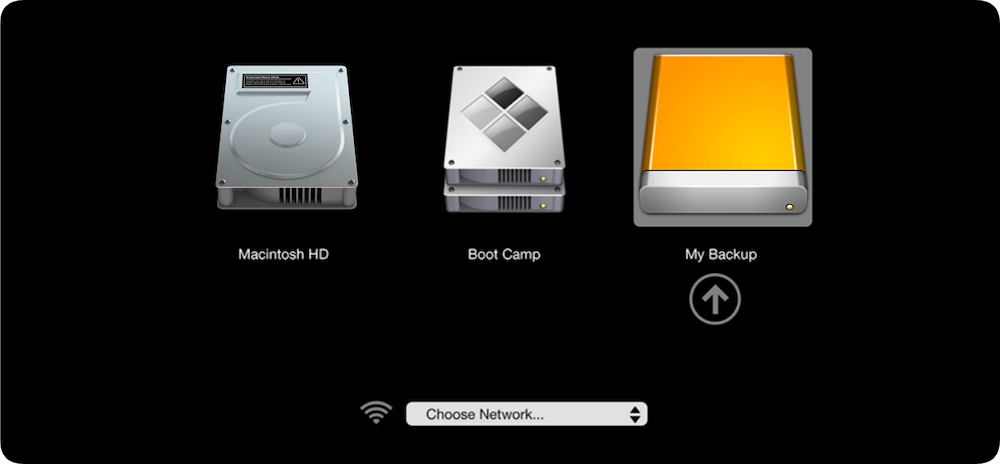
In this way, the Mac will boot from the cloned SSD once. After confirming the cloned new SSD is bootable with all data intact, you can then replace the old drive with the new SSD as the main startup disk directly if necessary.
Conclusion:
Cloning Mac El Capitan to new SSD is a quick and simple way to upgrade the Mac hard drive to SSD. Before cloning the drive, check and ensure to get an SSD with enough capacity. Then connect it to Mac with proper adaptor or cable.
With Disk Utility or Donemax Disk Clone for Mac, you can clone Mac El Capitan to SSD easily. Disk Utility is a macOS built-in tool that can clone drive and manage hard drives. However, the tool cannot ensure to create a bootable clone especially in new macOS versions. Disk Clone for Mac, in the other hand, can guarantee to create bootable clone for startup disk even in the new macOS systems, including macOS Tahoe 26.
FAQs about Cloning Mac El Capitan to New SSD
In several scenarios, you can clone Mac El Capitan to new SSD:
- Upgrade Mac El Capitan hard drive to SSD to speed up Mac.
- Upgrade to a new and larger SSD in case of space insufficient.
- Replace a failing drive with a new SSD.
- Migrate OS X El Capitan to another Mac.
- Disk Utility
- Donemax Disk Clone for Mac
- Magoshare AweClone for Mac
To ensure the cloned drive is bootable, you can use Donemax Disk Clone for Mac to clone OS X El Capitan. Here are the simple steps:
- Launch Donemax Disk Clone for Mac.
- Change to OS Clone mode.
- Select an empty hard drive as destination.
- Click Clone Now button to clone the drive.
- Restart Mac after cloning Mac drive to SSD.
- Then immediately press and hold Option key while Mac starting.
- Release the key until you see the apple icon.
- Then you will see the startup options screen.
- Choose the cloned SSD and click the up arrow icon to restart.
If the Mac boot successfully from the cloned SSD, the bootable clone is successful.

Donemax Disk Clone for Mac
An award-winning disk cloning program to help Mac users clone HDD/SSD/external device. It also can create full bootable clone backup for Macs.
Related Articles
- Sep 28, 2025Migrate Data from macOS Sequoia to macOS Tahoe
- Jun 16, 2023Transfer macOS to SSD with or without Software
- Jul 09, 2025How to Use Time Machine on macOS Tahoe 26?
- May 23, 2023Clone APFS Disk Volume on Mac with Two Methods
- Aug 08, 2025How to Clone FAT/exFAT/EXT Hard Drive on Mac?
- Jan 01, 2024How to Create Disk Image Backup on macOS Sonoma?

Steven
Steven has been a senior writer & editor of Donemax software since 2020. He's a super nerd and can't imagine the life without a computer. Over 6 years of experience of writing technical solutions and software tesing, he is passionate about providing solutions and tips for Windows and Mac users.

Gerhard Chou
In order to effectively solve the problems for our customers, every article and troubleshooting solution published on our website has been strictly tested and practiced. Our editors love researching and using computers and testing software, and are willing to help computer users with their problems
